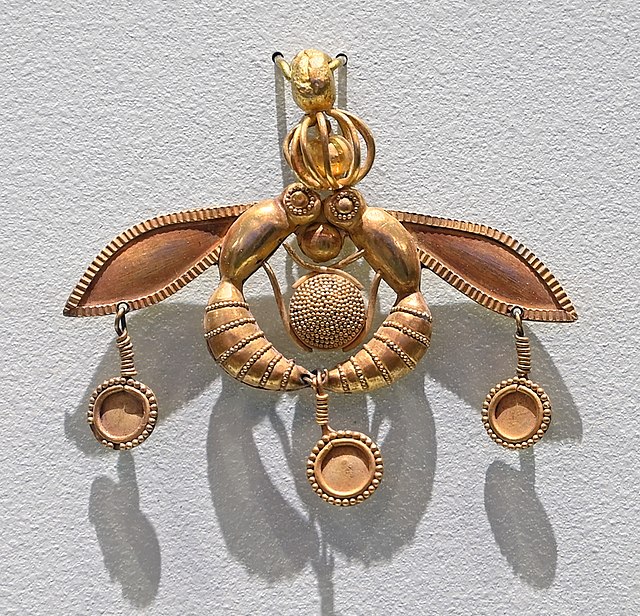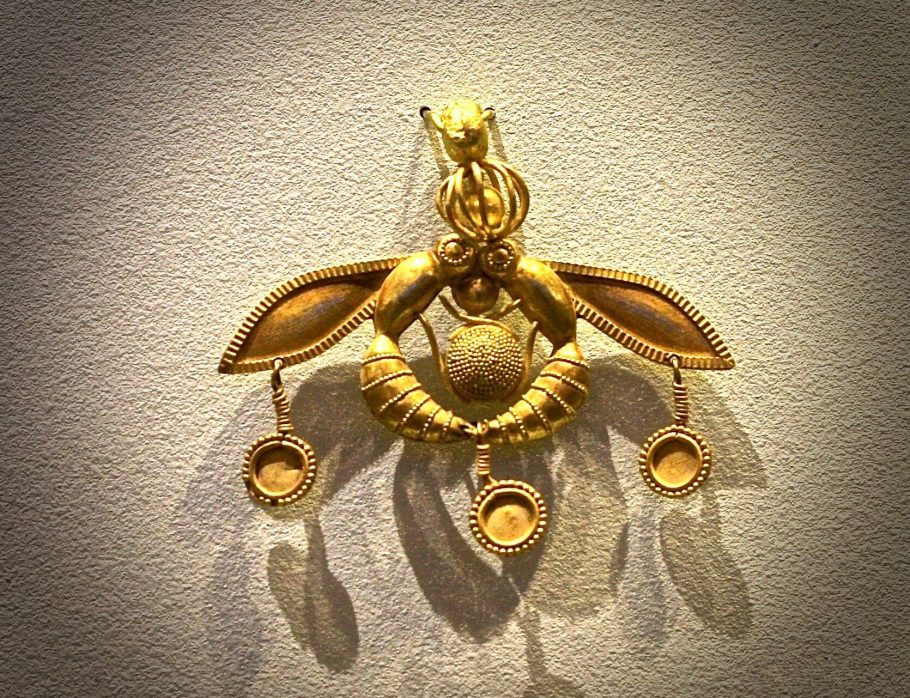Beekeeping is an integral part of Cretan life. In all phases of their life we see that it is connected with honey!
At weddings, the groom and the bride eat honey with walnuts as a symbol of fertility, and to make their life sweet, the wedding dessert is xerotigano (a fried dough with honey) and melomakaroni, which are made at Christmas. The history of Crete proves to us that it was one of the first parts of the Greek area where beekeeping existed.
We see the use of the bee as a cult in the Minoan and also in the Mycenaean culture.

In the permanent exhibition of the Heraklion museum you will find Periapto* with bees. It is one of the greatest and best known works of Minoan art dating back to the Middle Bronze Age, around 1700 BC and was found in the region of Malia. The famous periapto is in the shape of two bees or wasps, which deposit a drop of honey in the honeycomb.
In the north-western foothills of Ida, at an altitude of approximately 380 m, and at a distance of 30 km south of Rethymnon, lies the ancient city of Eleftherna. The city was founded by the Dorians in the 9th century BC. Today, ruins from various historical periods of the life of ancient Eleftherna are preserved. In 2010, the discovery at the site of a 2,700-year-old double tomb was announced, concealing more than 3,000 gold leaves and the first depiction of the bee as a goddess. The jewel that the dead girl had hanging around her neck, thus depicts a lily. On the reverse, however, it shows a bee-goddess with her body and wings Sometimes a bee-goddess, sometimes a lily. Her body is reminiscent of a female figure with arms on her chest and the torso of an insect with large wings, decorated with spotted flowers. According to the mythological version, the bees together with Amalthea nurtured the infant Zeus in the Ideal Anthro. This object from which the logo of the Museum of ancient Eleftherna is inspired.
Phaistos was one of the most important centers of the Minoan civilization, during the excavations in Phaistos clay cells were found from the Minoan era (3,400 BC) much older than Homeric.
Bees are celebrated on World Bee Day on May 20. May 20 coincides with the birthday of the Slovenian Anton Janša, who in the 18th century pioneered modern beekeeping techniques in his homeland and praised bees for their ability to work so hard while needing so little care.
Indicative bibliography:
Vassilakis A., Archaeological Museum of Heraklion, Athens, BC, 127-128
Greek Art, The dawn of Greek art, Athens, 1994, no. 65 192, 323
Sakellarakis I.A., Heraklion Museum, Athens, 2003, 70-71
https://en.wikipedia.org
*object believed to have magical and apotropaic abilities, talisman
